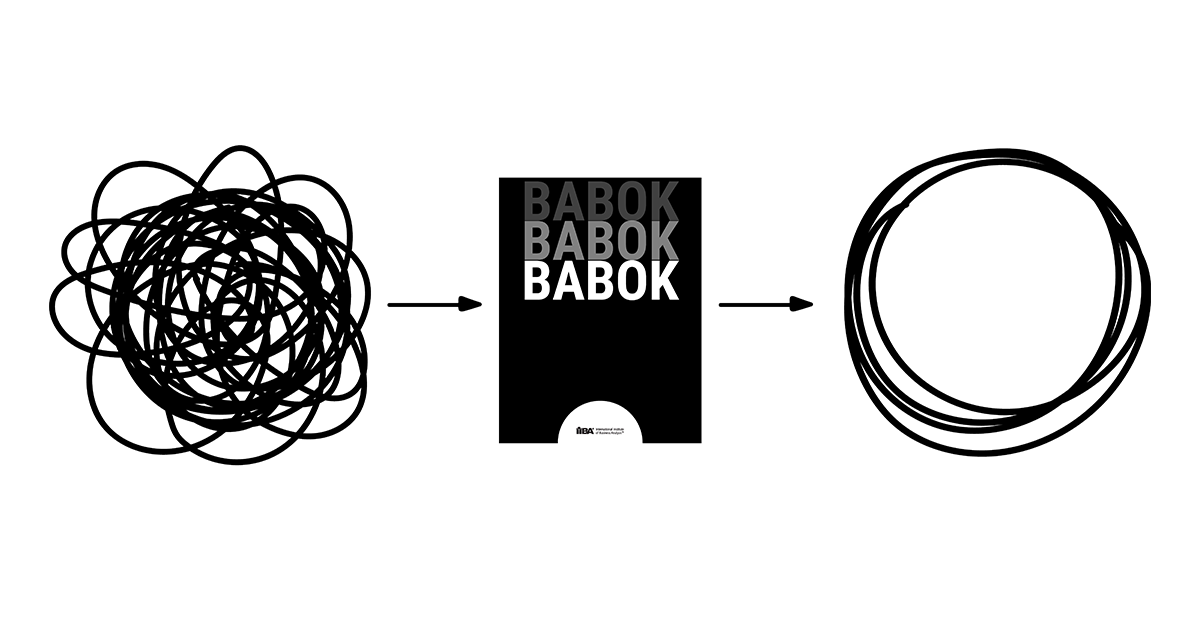From Chaos to Control: How Business Analysis Transformed a GxP Process in Pharma
Disclaimer: The views and opinions expressed in this article are those of the author and may not reflect the perspectives of IIBA.
As a Senior Business Analyst and Project Manager in a highly regulated industry, I have had the opportunity to transform manual, error-prone processes into streamlined, compliant, and auditable systems.
One project, in particular, highlights the power of structured business analysis, rooted in the IIBA’s A Guide to the Business Analysis Body of Knowledge (BABOK Guide), to solve critical operational problems and deliver meaningful results.
The manual GxP (Good Practice) process I worked with involved managing stability data—data that supports decision-making in the event of temperature excursions. This is when a product or material, such as pharmaceutical products or vaccines, is exposed to temperatures outside of the defined acceptable range during storage or transportation.
The redesigned solution helped improve efficiency, compliance, and collaboration across departments and external partners.
Background: The Stability Data Management Challenge
In a regulated setting, teams relied on an Excel file to maintain stability data. This data played a vital role in temperature excursions. Business units used the data to assess whether a batch of product remained viable and safe for release.
The process included a tracker that was manually updated based on notification emails. The files were stored in a shared network drive, and each time an update was made, the latest version was manually emailed to external stakeholders. If a formal statement was required, the team drafted a letter using data from the tracker.
This process presented a classic business problem with significant compliance and efficiency implications and a few notable gaps:
- Manual updates led to delays and inconsistent communication
- No audit trail or version history beyond what was manually maintained
- Lack of formal review and approval mechanisms
- Risk of external partners relying on outdated versions
Eliciting Requirements Using Stakeholder Engagement and Personas
BABOK Guide Knowledge Area: Elicitation and Collaboration
My first step was to conduct structured elicitation activities to understand user needs, pain points, and business goals. I scheduled interviews and collaborative workshops with stakeholders across different teams, namely Quality, Compliance, and Logistics.
To bring clarity to user expectations and aid in design conversations, I introduced fictional personas based on several recurring stakeholder profiles:
- Compliance Analyst Clara – Maintains the tracker and drafts communication
- Quality Reviewer Jovie – Reviews and approves data updates
- External Partner Mandy – Receives data and relies on it for timely decisions
Using these personas, I documented the "As-Is" process. This visual model gave the stakeholders a clear view of the manual steps, the gaps in accountability, and the lack of automation. It also created alignment and helped stakeholders see the need for change and where to make those changes.
We collaborated to create a shared vision for the future process, emphasizing automation, data integrity, user access control, and regulatory compliance. We developed a process flow that illustrated our envisioned future state and helped align stakeholders around a common direction.
Turning a Vision Into Testable Requirements
BABOK Guide Knowledge Area: Requirements Life Cycle Management
With agreement on the future-state process, I moved on to identifying the changes needed to support it. This work transitioned naturally into documenting requirements. To ensure clarity and alignment, I focused on writing functional requirements that were clear, concise, and testable. For instance, I defined a key requirement like this:
- New record: Quality owner creates a new entry with the required information provided by the manufacturing site
I included acceptance criteria for each requirement. The acceptance criteria helped us understand the minimum set of requirements that must be met. They provided a testable way of expressing requirements while also giving the team an objective way of assessing each requirement:
- The Quality owner must input the required data, including batch number, temperature excursion details, and date of the event
- A confirmation message must appear once the entry is successfully created
Additionally, we identified non-functional requirements like system performance, audit readiness, and usability to ensure a robust solution that needed to be met:
- The system must support over 150 users concurrently without degradation in performance
- Every action taken in the system must be logged for audit readiness, maintaining a detailed version history
- The interface must be user-friendly, minimizing training needs for users with limited technical expertise
By documenting each requirement in this manner, I ensured a clear pathway for testing, validation, and compliance checks throughout the project’s development phase. This allowed the team to track progress, verify requirements, and promptly address any issues that arose.
Prototyping the Future State and Exploring Scenarios
BABOK Guide Knowledge Area: Requirements Analysis and Design Definition
To help stakeholders visualize the proposed system, I developed a clickable prototype showing step-by-step user interactions. The prototype featured:
- A user-friendly submission form with built-in validation
- Reviewer dashboard for the Quality team to approve changes
- Automatic generation of reports formatted for external sharing
I conducted scenario-based walkthroughs to explore the following what-if cases:
- What if a user forgets to submit an update?
- What if two updates occur simultaneously?
- What happens when an external user requests outdated data?
Having a working example of the solution allowed stakeholders to better understand how users might interact with the system—and where issues could arise. This approach allowed us to refine the design and anticipate edge cases before development.
Evaluating the Solution and Aligning With Compliance Goals
BABOK Guide Knowledge Area: Solution Evaluation
Once the solution was implemented in a test environment, we initiated a pilot involving a representative user group. We collected feedback using structured forms, focusing on usability, efficiency, and customer satisfaction.
We also assessed whether business and compliance objectives were met:
- Were all updates traceable?
- Could stakeholders access the latest data effortlessly?
Based on feedback, we added a few new features, including email notifications. The application was rolled out, with appropriate training and user support materials.
Seamless Handoff to Development
The finalized documentation, including the prototype requirements, was submitted to a newly onboarded developer. The clarity and completeness of the documentation ensured that no questions were raised during the design or build phase.
The solution was implemented precisely as designed, validating the effectiveness of our early-phase analysis and design work.
Enabling Better Decisions Through Business Analysis
In a regulated industry like healthcare and pharmaceuticals, every system improvement has a ripple effect. The stability data managed through this solution plays a role in making safe, informed decisions about product release. By strengthening this process, we indirectly contribute to patient safety and product integrity.
For me, this project reinforced the idea that business analysis isn’t just about gathering requirements. It’s also about enabling the business to make better decisions faster and with more confidence. Through the disciplined application of IIBA knowledge areas, I was able to lead a meaningful transformation that blended innovation with compliance.
By leveraging BABOK Guide practices, I didn’t just help implement a tool—I helped redesign how people work, collaborate, and deliver value in a complex, high-stakes environment.
IIBA’s KnowledgeHub is your go-to resource for actionable "how-to" content, globally recognized standards (like the BABOK Guide), and practical tools for business analysis success. Start your FREE 7-day trial today.
About the Author

Sulakshna is a Senior Business Solutions Analyst and Project Manager in the IT department at Aspen Global Incorporated (AGI), with over 16 years of experience, including 10 years at AGI. Her unique combination of business analysis and project management allows her to bridge the gap between strategy and execution—translating business needs into clear, actionable solutions while ensuring projects are delivered on time and with impact. She has led global, cross-functional teams across Supply Chain, Quality, Regulatory, and Human Resources, delivering both GxP and non-GxP implementations. Proficient in SAP SuccessFactors, Oracle, and SharePoint, Sulakshna is known for her analytical mindset, structured approach, and ability to drive results from concept to completion.


